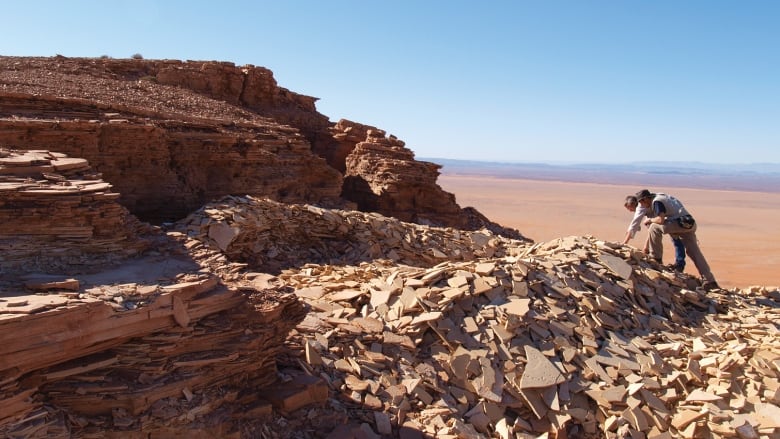Scientists describe the most dangerous place in the history of planet Earth
100 million years ago, the Sahara would have been packed with 'terrifyingly large' predators


Originally published on May 2, 2020.
An international team of scientists has described a predator-packed region that they say could be the most dangerous place in Earth's history. They say a human being would have survived there no more than a few minutes.
This place is now an arid area in the Sahara desert, on the Morocco-Algeria border. It's lined with Cretaceous rock formations known as the Kem Kem Group. But 100 million years ago, this would have been on the edge of an ocean, with big meandering river systems, like the Mississippi River Delta.
And the animals that lived here were big, and vicious.
"These sediments preserve an extraordinary abundance of terrifyingly large carnivorous animals," paleontologist Hans Larsson told Quirks & Quarks host Bob McDonald.
Some of the largest predatory dinosaurs ever found
In a new paper, Larsson and his colleagues describe a slew of fossils found in the Kem Kem Group. This includes three of the largest predatory dinosaurs ever found, such as Carcharodontosaurus — which were over eight metres tall — and Deltadromeus, a group of large raptors that rivalled the Tyrannosaurus rex.
What makes this area so bizarre, according to Larsson, is that the fossil record is shows a high abundance of predators, and not very many prey animals.
"We do know that there were herbivores there. There are some fossils of sauropods," he said. "But they're very rare, and we don't know why."

Some of the creatures were specialized dinosaur-eaters, so Larsson and his colleagues believe they may have been eating other carnivorous dinosaurs. Others, like giant spinosauruses and massive crocodiles, were specialized fish eaters, with spherical teeth.
The fish at the time also toppled the scales.
"Some of these fish were enormous! There were coelacanths that were probably able to swallow us whole. There were predatory fish that would take probably two bites out of us and were done," he said.
'This is not a viable ecosystem'
Larsson says that these fossils are just the tip of the iceberg in terms of what is buried in the limestone of the Kem Kem beds.
He hopes with more research, we can better understand why this area was so packed with predators.
"It's just unfathomable to have high abundances of these giant crocodiles and giant dinosaurs that were only eating meat," said Larsson.
"There must be some bias in the preservation of what's going on here, because this is not a viable ecosystem."
Produced and written by Amanda Buckiewicz